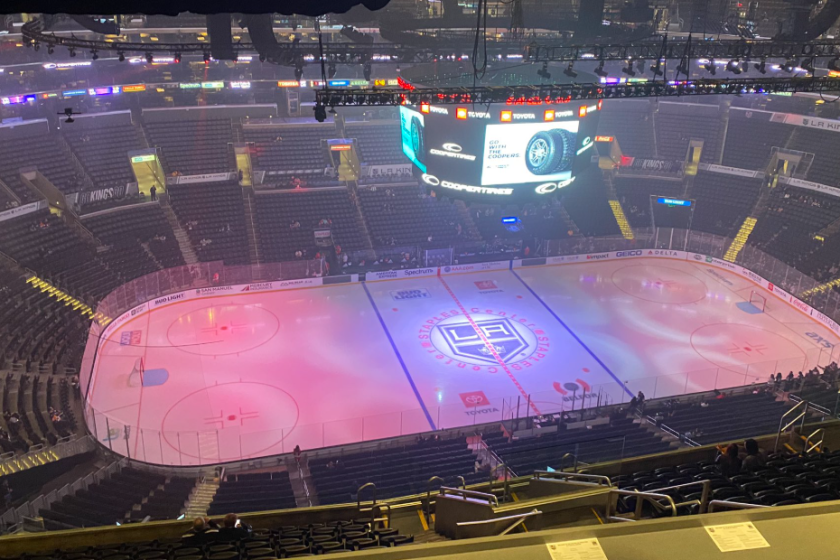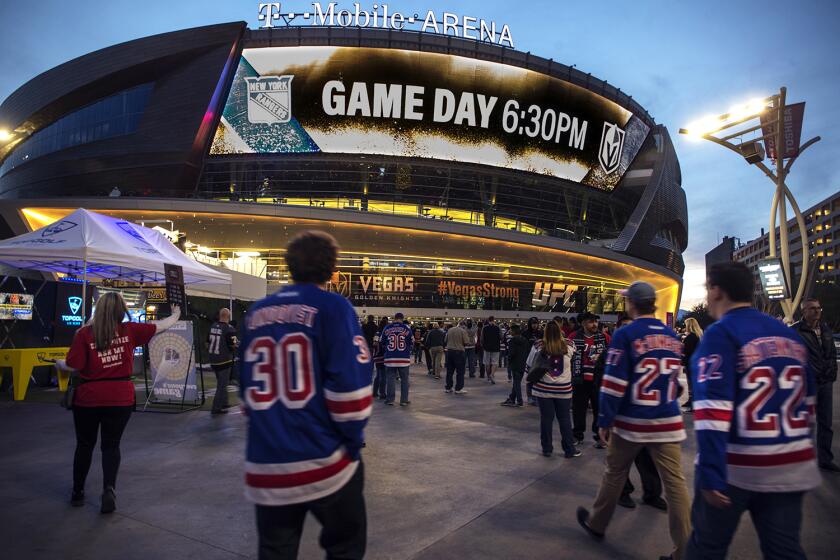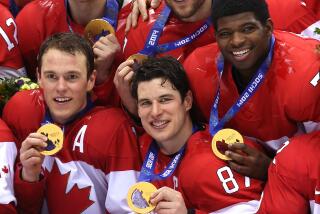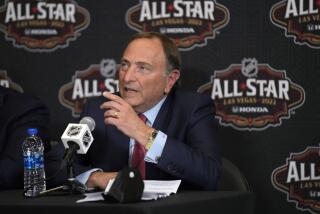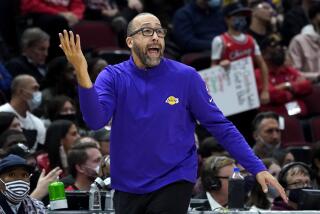NHL allowing teams to open training facilities for players next week
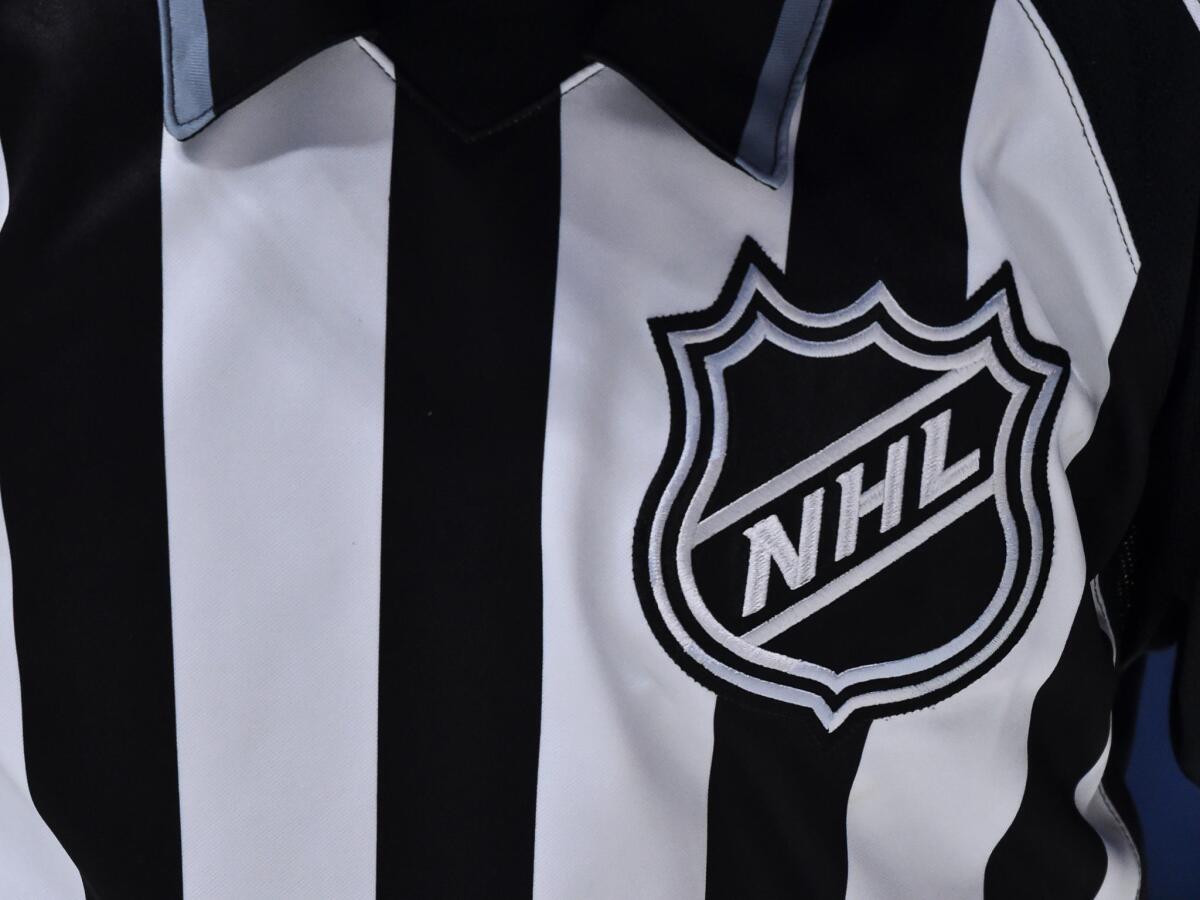
- Share via
The NHL’s restart plan took two small steps forward Thursday when the league disclosed details of its planned 24-team Stanley Cup playoff format and gaining momentum when the league announced that Phase 2 of its “Return to Play” plan will begin Monday. In the second of four planned phases, teams will be allowed to open their training facilities in their respective home city for players to begin voluntary workouts on and off the ice in groups no larger than six.
The NHL has been in Phase 1 of its plan since Commissioner Gary Bettman paused the season March 12 because of the COVID-19 pandemic. No timeframe was spelled out for the length of Phase 2, a period that would begin with pre-participation medical evaluations for players and would limit contact between players and club personnel. Physical distancing practices and enhanced disinfecting and cleaning measures will be in effect. Players and club personnel will be tested for the coronavirus 48 hours before they return to their club’s training facilities and will be tested at least twice weekly during that phase. The temperatures of those admitted to the facility will be checked every day.
Phase 3 would entail opening full training camps, which isn’t expected to begin before July 10, and Phase 4 would involve launching the playoffs in two “hub” cities, almost certainly without fans, in late July or early August. The league and the NHL Players’ Assn. have not established a timetable for any step, recognizing the changeable nature of the coronavirus outbreak and the necessity of navigating various local and federal health and safety guidelines.
Los Angeles is one of 10 cities being considered a hub for the NHL’s return. L.A. has held many big events at Staples Center, but its bid is a longshot.
The Stanley Cup playoffs will feature reseeding of teams instead of following a bracket, and after a best-of-five qualifying round all series will follow a best-of-seven format, the league said Thursday, following approval by the league’s board of governors and the NHLPA. The plan still requires an overall agreement between the league and the players’ union.
As approved, the top four teams in the East and top four in the West will compete in non-elimination, round-robin play to determine their playoff seeding. Ties will be broken by regular-season points percentage.
In the 16-team qualifying round, the higher-seeded team will be designated the home team for Games 1, 2, and 5, with the lower-seeded team designated the home team in Games 3 and 4. The eight winners will advance to face the teams that participated in the round-robin round.
In each subsequent round, the highest remaining seed in each conference will face the lowest remaining seed, the second-highest seed will face the second-lowest remaining seed, and so on. That’s a return to a format previously abandoned by the league.
In the first and second rounds, the higher-seeded team will be designated the home team in Games 1, 2, 5, and 7, with the lower-seeded team the home team in Games 3, 4, and 6. In the conference final and Stanley Cup Final, the team with the higher regular-season points percentage will be designated the home team in Games 1, 2, 5, and 7.
The NHL will choose two cities among 10 candidates to act as hubs for its potential return this summer. Here’s a look at the pluses and minuses for each city.
The NHL said last week that Los Angeles is one of 10 finalists to host playoff games as a hub city, and Bettman said the league would wait about three weeks to base its decision on the most up-to-date information regarding coronavirus cases and restrictions in each city. The NHL isn’t likely to announce the elimination of any candidate cities before announcing its choices.
Separately, the Pittsburgh Penguins announced that one of their players had tested positive for COVID-19. It was the ninth known positive test among NHL players; the others involved five Ottawa Senators players and three from the Colorado Avalanche.
“The player is not in Pittsburgh and has been in isolation at his home since first experiencing symptoms. He is recovered and is feeling well,” the Penguins’ statement said. “Those in close contact with the player leading up to his diagnosis have been notified.”
More to Read
Go beyond the scoreboard
Get the latest on L.A.'s teams in the daily Sports Report newsletter.
You may occasionally receive promotional content from the Los Angeles Times.

